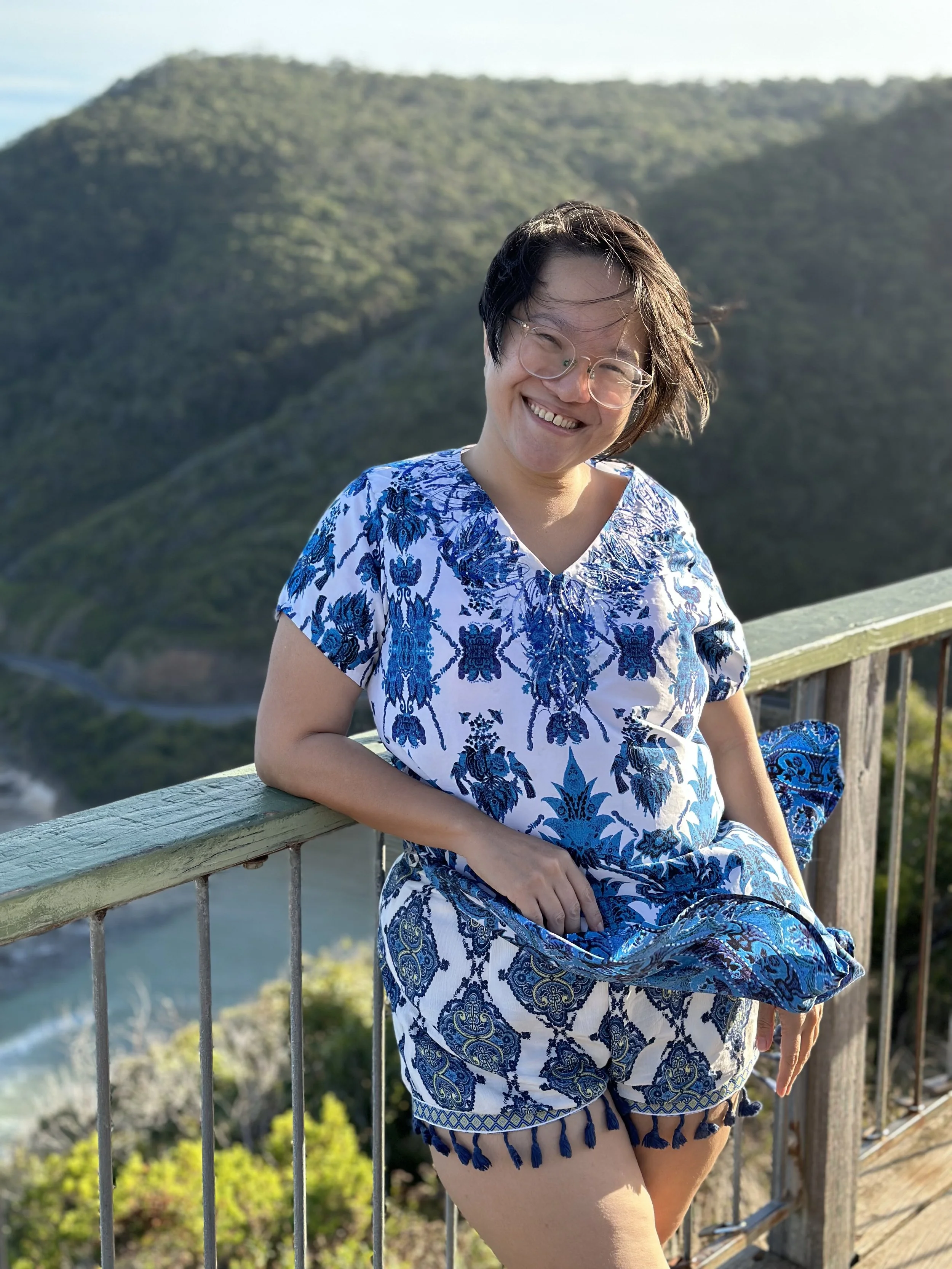I have been making art ever since I was a child. It is no coincidence that I continue to make meaning with visual art media in my adult life. In my profession as an art therapist, I use art to facilitate the process of inquiry, reflection and transformation. I have witnessed the prowess and powers of how creativity can be transformative as my own healing journey has been an intimately and inherently creative one.
I was born in Malaysia to parents with Chinese cultural lineage. Being a minority in a country with British colonial history has made the quest to belong a lifelong one. I have a soft spot for the fugitives, for those who struggle to be 'normal’ and those who despite their best effort, simply could not fit in.
I was a sojourner in Singapore between 2012- 2019, temporarily residing, living and working in this highly urbanised island state after receiving training and qualifications as an art therapist. Even though I look like the dominant race, I am hungrier as ever to belong. My heart was beating to a strange rhythm, pleading to come alive in a jungle not made out of concrete, of what- I did not know yet.
I received a scholarship to pursue a PhD in 2019 in Darwin, Larrakia Country of the saltwater people in Northern Australia. This regional town is called the ‘Gateway to Asia’, a place that is usually obscured from the narratives of Australia as a modern first world country. I was fascinated by this land that reminds me of home, with its subtropical climate and its multicultural populations. Most of all, I was intrigued by how my professional training as an art therapist did not prepare me to work with First Nations people. I asked myself why and began to make a decolonial gesture of making visible the whiteness of therapeutic culture that I was trained in and reclaiming my own roots as an act of resistance.
Darwin has been, for me, a liminal space for healing; a place of pause, of rest, of suspension. It is a place where people do not think of when we talk about modernity, progress and economic advancement. Because it is not a place for all of these, it is a perfect place for exploring what it means to be ‘healing differently’. My research title was aptly named ‘Exploring the third space borderland in creative therapies and practice.’ I spoke to people with rich lived experiences from diverse sociocultural background and asked them what it meant to be unwell, and what it takes to heal. Their stories and art inform my PhD project and inspired me to create my visual response which I have shared in the Art Gallery page. Art and healing, have continue to be borderland spaces for exploration and experimentation of who we truly are, in a time marked by global uncertainties, mass migration and climate change.
In my research, I return myself to me. I began to reclaim my story by writing the difficult and traumatic stories between my mother and myself. I made art that decentres my colonial training as a western art psychotherapist and rerooting the cultural narratives of my late mother, situating us in the animist, Buddhist and more-than-human world where we both belong. Coming back home to myself had the opposite effect of making me expansive and embracing of differences in a way that is cognisant of our entanglement in this web of life.
